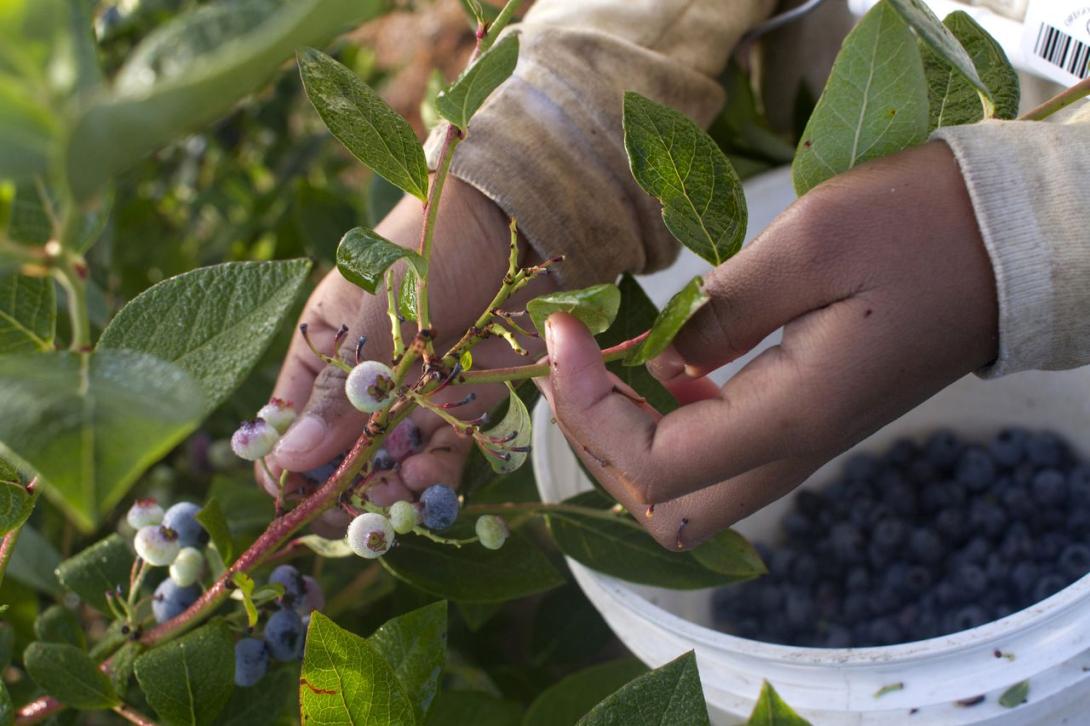
Oregon’s agricultural laborers have faced heightened risks during the coronavirus pandemic, and some continue to report insufficient access to personal protective equipment and a lack of social distancing at work sites, along with inconsistent access to COVID-19 testing.
Those reports come from interviews and surveys conducted with over 200 farmworkers that participated in the Oregon COVID-19 Farmworker Study. The study was conducted by a group of 11 agricultural worker organizations across Oregon and academics from Portland State University, Oregon State University and the University of Oregon.
Published Tuesday, the study was funded by the University of Oregon, the Oregon Community Foundation and CASA of Oregon. Similar studies were conducted in California and Washington.
Oregon farms and food processing facilities have been the sites of more than 50 coronavirus outbreaks since March, infecting more than 1,500 workers and close contacts. Latinos, who make up the majority of Oregon’s estimated 174,000 migrant and seasonal farmworkers, have been disproportionately impacted by COVID-19 as well.
Agricultural outbreaks in Oregon, and similar outbreaks across the country, alarm worker advocates. Some have called on state officials to do more to protect agricultural workers.
“A lot of times people are in this Catch-22,” said Reyna Lopez, director of Pineros y Campesinos Unidos del Noroeste (PCUN), Oregon’s largest farmworkers union. “You go to work and you risk yourself and literally are risking your life to put food on the table for America and your own family, or you stay home and it’s a risk to your livelihood and even making ends meet.”
Oregon has taken steps to address the risks of coronavirus spread in agricultural facilities, developing a response plan for outbreaks, providing employers with toolkits of best safety practices and putting a greater emphasis on inspecting and enforcing regulations at these facilities.
The Oregon Occupational Safety and Health division (Oregon OSHA) also introduced temporary rules earlier this year requiring agricultural employees to make changes to labor housing, transportation and field sanitation to mitigate the spread of COVID-19. Gov. Kate Brown allocated $30 million to distribute personal protection equipment to farmworkers, support outreach programs and help employers implement those temporary rules.
Emilio DeBess, an epidemiologist at the Oregon Health Authority, said in July that most employers he had spoken with had taken proactive steps to protect workers and avoid potential outbreaks, which could force them to shut down and impact the state’s food supply.
“A lot of them are being extremely proactive,” DeBess said. “They understand what the consequences are going to be if they’re not, in terms of transmission from one individual to another and on to the community.”
However, Oregon OSHA inspects only a small percentage of agricultural facilities and agricultural labor housing sites each year. The agency has received at least 270 complaints about working conditions at farms and food processing facilities since March. Researchers for the Oregon COVID-19 Farmworker Study also found varied conditions on the ground.
While the majority of the 214 farmworkers surveyed said their employers had made some changes to mitigate the spread of COVID-19, 22% said their employers had not made changes to the conditions of bathrooms and handwashing areas, while 39% reported that there were moments during the work day when they could not maintain six feet of distance from other workers.
In addition, 20% said their employers did not provide them with masks. While most workers indicated they had been provided masks by their employers, two thirds said the employer-provided masks were made of cloth.
The quality of masks became an issue earlier this month as wildfires across the state caused unhealthy and even hazardous air quality conditions throughout Oregon. Many farmworkers continued to work, even as the air quality deteriorated.
One vineyard worker in Yamhill County who spoke to The Oregonian/OregonLive worked six days in the span of a week when the air quality was at its worst. He wore only a cloth mask while working and reported experiencing trouble breathing, even after he returned home following his shift.
Another farmworker in Yamhill County, the wife of that vineyard worker, said she had recently recovered from COVID-19. While she said she did not know how she contracted the virus, she said shortly before she tested positive, she spent a day working at a nursery in close proximity to other laborers who weren’t wearing masks. She said that there has been a lack of physical distancing at multiples sites where she has worked this year.
“There was no social distancing,” she said through a Spanish interpreter. “There were people working right next to each other or in groups.”
While Oregon has taken steps to make coronavirus tests available to farmworkers, the state has not mandated testing for those working on farms and in food processing facilities.
About a third of the farmworkers who participated in the study said they had been tested for COVID-19. Many said they were scared that they would lose their job or be forced to miss work if they were tested for the virus. Farmworkers often live paycheck-to-paycheck and many don’t have health insurance, according to work advocates.
Respondents also said they didn’t have access to sick days and weren’t aware that relief money, including the Oregon Workers Relief Fund and COVID-19 Farmworker Rental Relief Fund, could be available to them if they were asked to quarantine. The majority of respondents lived in shared housing and were concerned they wouldn’t be able to isolate if they contracted the virus.
While the Oregon Health Authority does provide information and resources directed at farmworkers on their website, researchers found that language barriers, especially for laborers who speak indigenous languages, proved to be an obstacle for farmworkers in accessing information on the pandemic.
-- Jamie Goldberg | [email protected] | @jamiebgoldberg
This story was originally published by The Oregonian/OregonLive and is posted here through an agreement among a dozen Oregon media outlets to share coronavirus coverage.